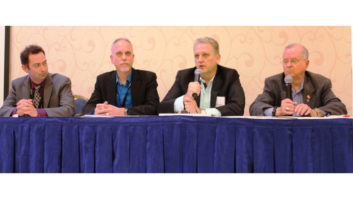DALLAS� AT&T will begin testing fixed broadband services using spectrum in the 15 GHz band and pre-�5G� technology this summer.� It will also test 28 GHz band spectrum later this year. A mobility component is expected to be added to those tests by early 2017.
Rcrwireless.comreports that Scott Mair, SVP for technology and engineering at AT&T, while speaking at the recent Jefferies Technology Conference, acknowledged the �pre-5G� technology would not adhere to any set specifications, which he said would not be available until 2018. He also said that AT&T, like its main rival Verizon, believes that it is important to at least begin working with some of the components expected to be part of the future 5G standard so that real world experience can be gained in the meantime.
�
Mair said massive IoT deployments will require networks to be capable of supporting1 million devices in a one square-kilometer environment and that vehicle-to-vehicle, smart city and mobile health care services will rely on extremely low latency networks of less than one millisecond in the over-the-air interface. The same article reports that Mair said �there will be a need to re-architect LTE� in order to meet those performance requirements.
�
Mair said 5G deployments could also make use of lower-band spectrum currently held by carriers and that it could potentially use the 3.5 GHz band being opened up on a shared basis by the Federal Communications Commission.
�
AT&T is looking in late 2017 to add support from the 1.7/2.1 GHz spectrum band the carrier purchased in last year�s AWS-3 auction, with volume deployments set for 2018. Wi-Fi also remains key element of AT&T�s network deployment model. Mair noted that around 80% of data generated from mobile devices is currently being transmitted using unlicensed spectrum.
�
However, �mobility and quality of service issues� continue to limit the use of the technology and its greater use by the carrier.�
�
�












